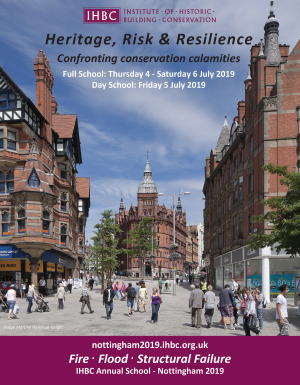 BRE has reported that through QSAND -(Quantifying Sustainability in the Aftermath of Natural Disasters) a self-assessment tool to promote sustainable approaches to relief, recovery and reconstruction after a natural disaster – it is contributing to help achieve several UN Sustainable Development Agenda goals in disaster-affected communities around the globe.
BRE has reported that through QSAND -(Quantifying Sustainability in the Aftermath of Natural Disasters) a self-assessment tool to promote sustainable approaches to relief, recovery and reconstruction after a natural disaster – it is contributing to help achieve several UN Sustainable Development Agenda goals in disaster-affected communities around the globe.
The UN Sustainable Development Agenda, adopted by world leaders in 2015, mapped out a 15-year plan to fight inequality, end poverty, and tackle climate change challenges, with 17 goals designed to build upon the Millennium Development Goals. Some of the Sustainable Development Goals (SDG) laid out in the Agenda are being met through implementation of QSAND.
QSAND is a free to use shelter and settlement sustainability and resilience self-assessment tool. Promoting sustainable shelter and settlement activities in the aftermath of natural disasters will ensure the reconstruction is more effective and sustainable both locally and globally.
 Dealing with natural disasters will form one of the strands of IHBC’s Annual School (nottingham2019.ihbc.org.uk)in July this year. Use of a tool like QSAND is not limited to earthquakes or tsunamis across the world but also closer at home to the after effects of Flood. Reconstruction, in whatever circumstances, home or abroad, should be sustainable.
Dealing with natural disasters will form one of the strands of IHBC’s Annual School (nottingham2019.ihbc.org.uk)in July this year. Use of a tool like QSAND is not limited to earthquakes or tsunamis across the world but also closer at home to the after effects of Flood. Reconstruction, in whatever circumstances, home or abroad, should be sustainable.
BRE BUZZ writes:
Central to the thinking behind the QSAND tool is that sustainable approaches to reconstruction can help limit the impact disasters have in the short, medium and long term and improve the resilience of local communities to future disasters as they occur. It is this holistic approach and a strong focus on the development of local skills and capabilities that demonstrates QSANDs overarching support for the SDGs.
In addition to its focus on sustainable cities and communities (SDG 11), QSAND supports the goals by promoting clean and renewable energy solutions (SDG 7), responsible consumption (SDG 12), and clean water and sanitation (SDG 6) alongside many other areas.
Consideration of the natural environment alongside the needs of people globally is important in measuring success in the pursuit of the SDGs. It can offer a form of protective barrier against disasters. QSAND does this by providing a framework which can be used to support protection of local ecology, balancing this against the maintenance of livelihoods and economic prosperity. Often, protecting natural resources can also support livelihoods, further reducing a community vulnerability to disasters.
Whilst QSAND is designed as a tool to be used in response to a specific disaster to support the recovery process, its sustainability scope is wider than this. By considering the medium to longer-term impacts of decisions made in the early days of disaster recovery, it helps provide a framework that can help avoid, limit or mitigate further harm to the natural environment that can occur during reconstruction.
See more on Qsand

